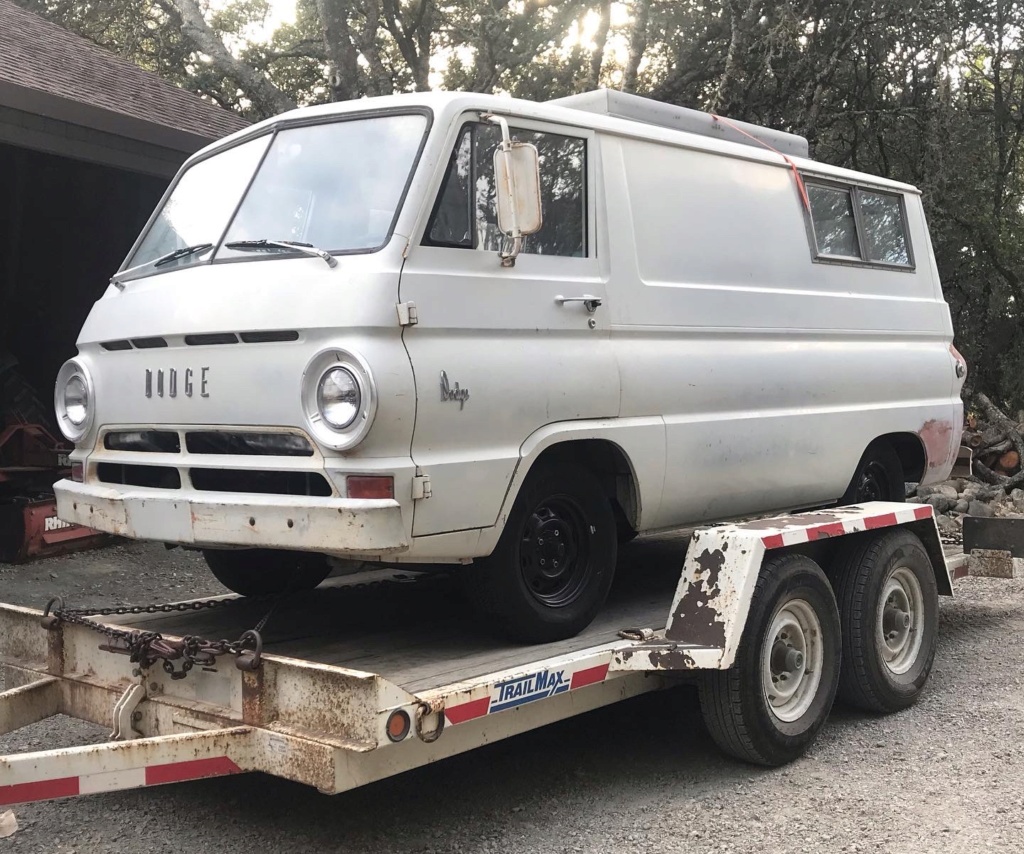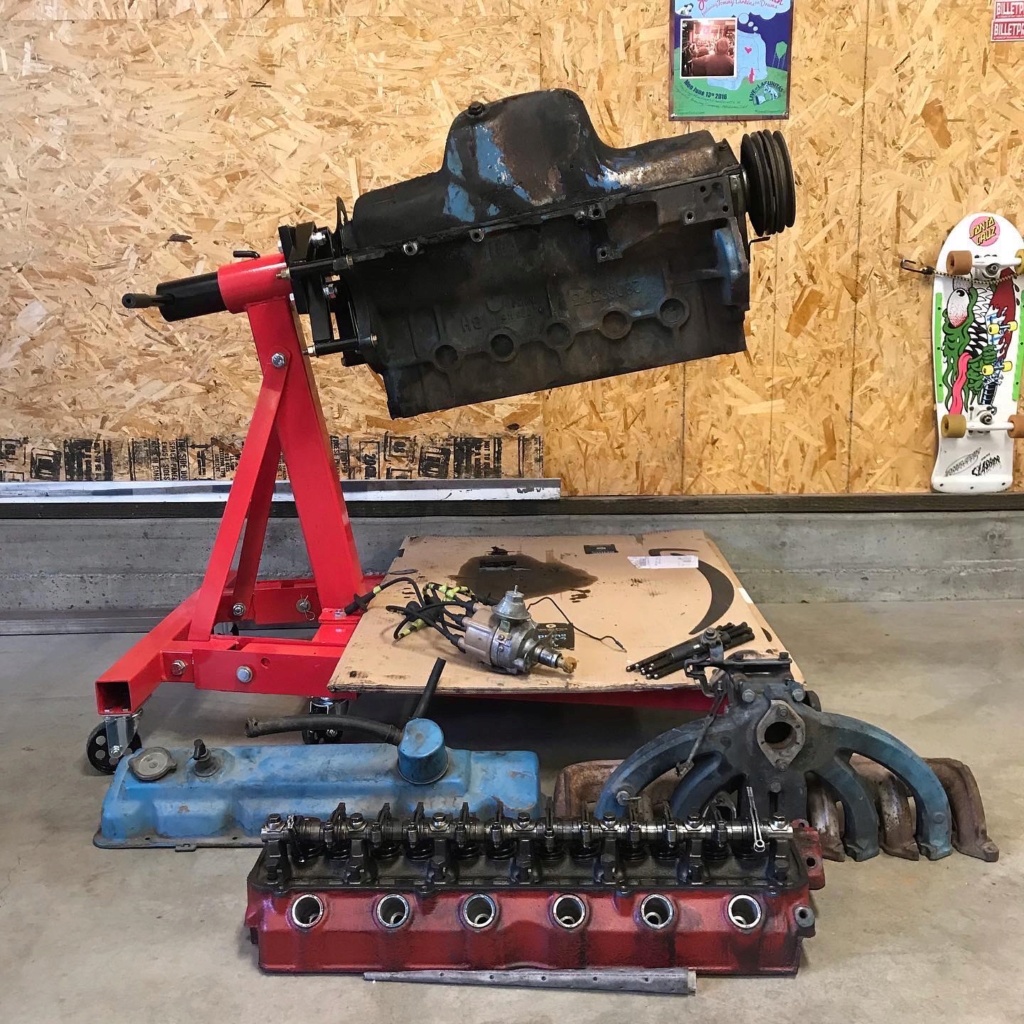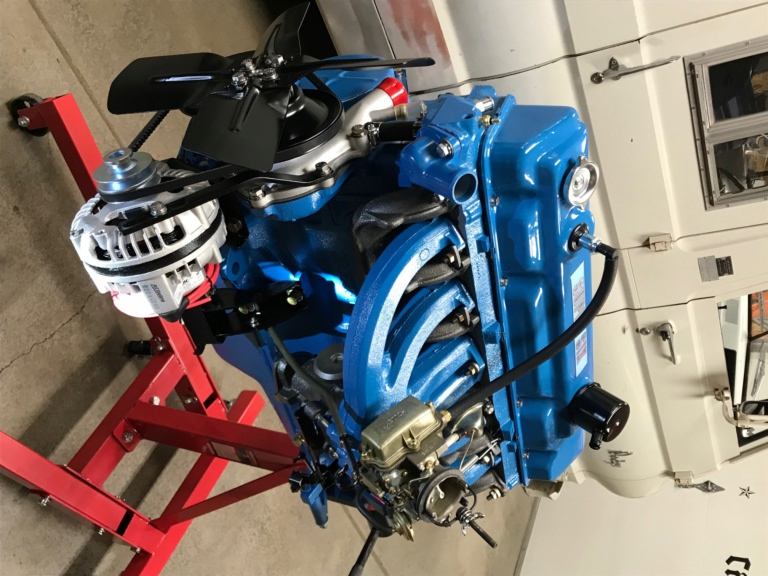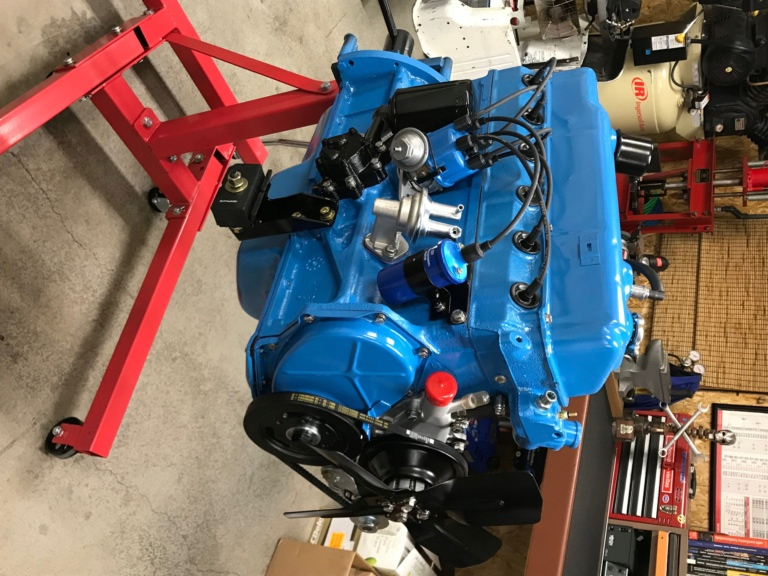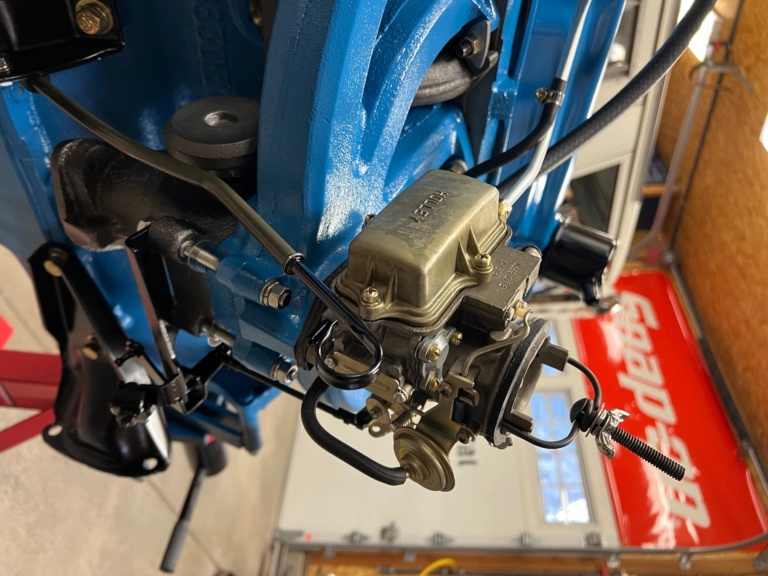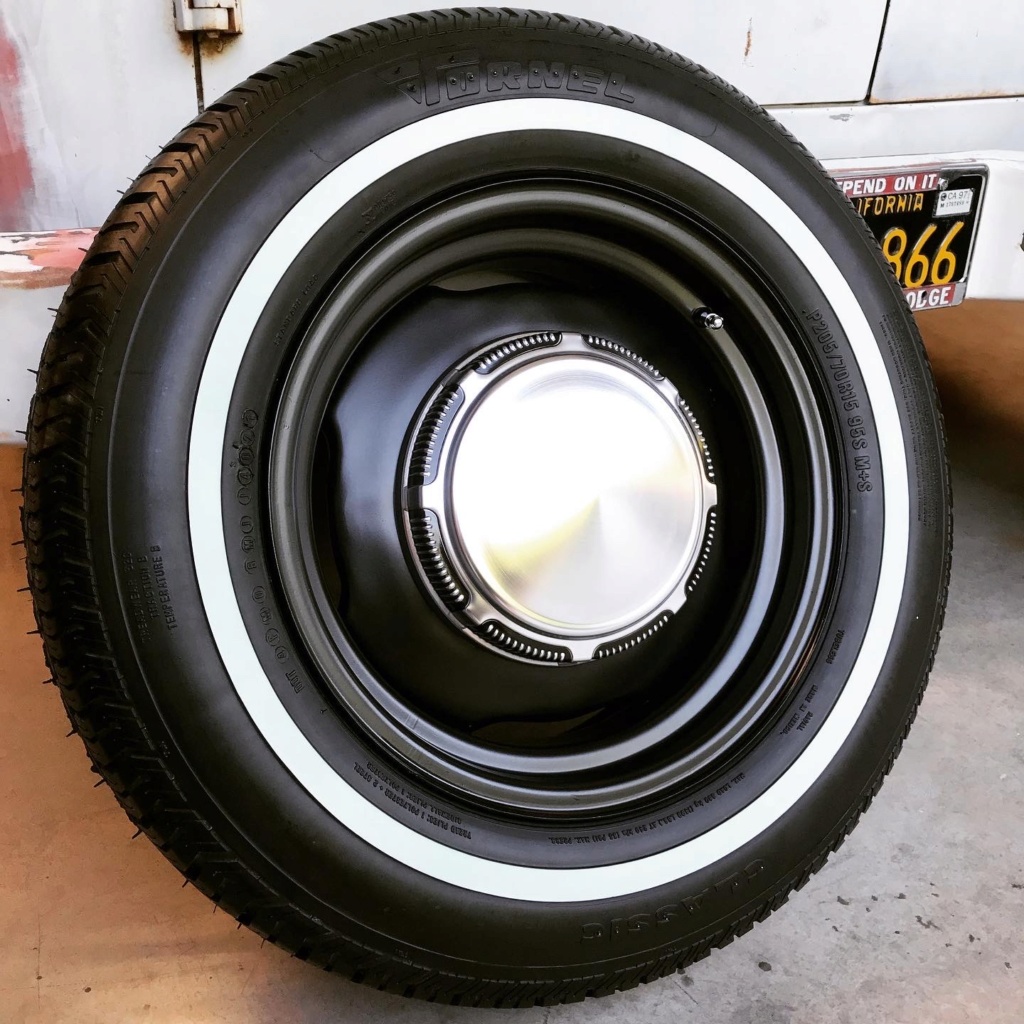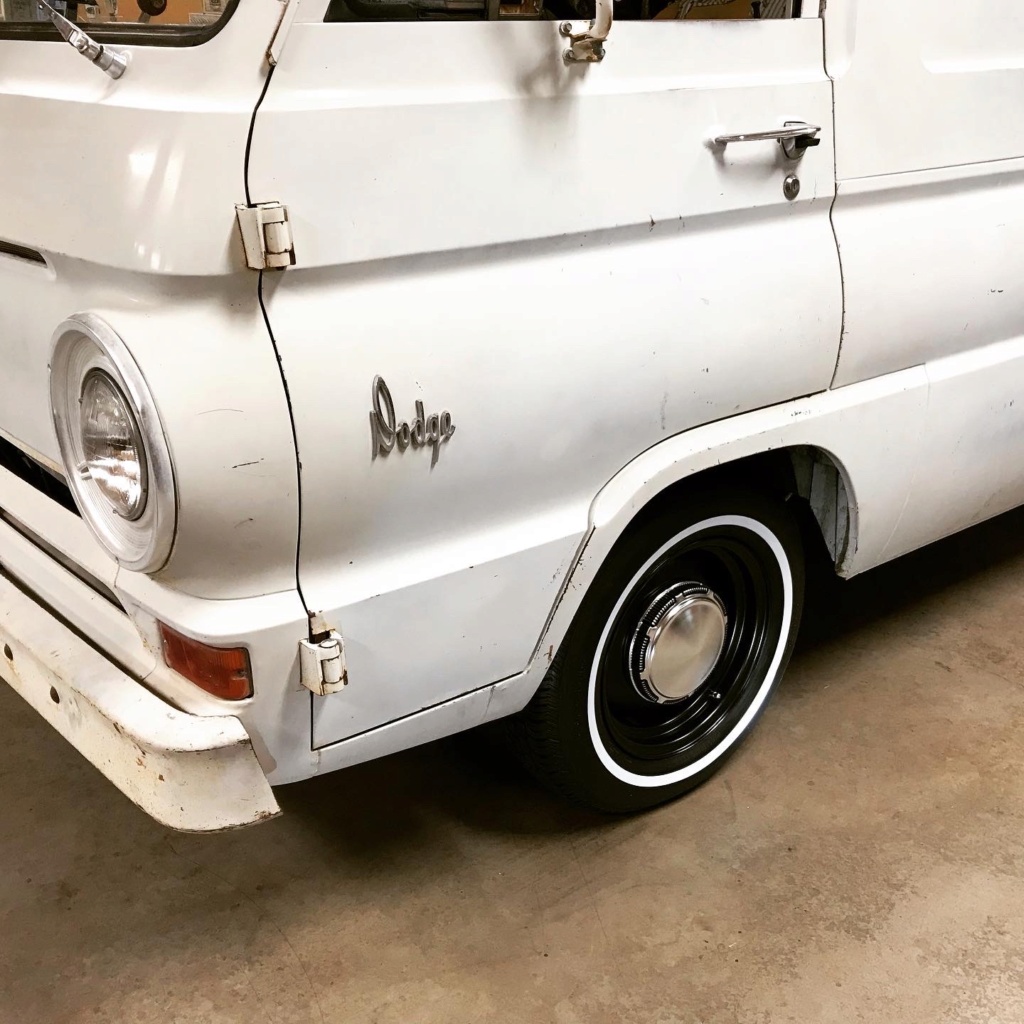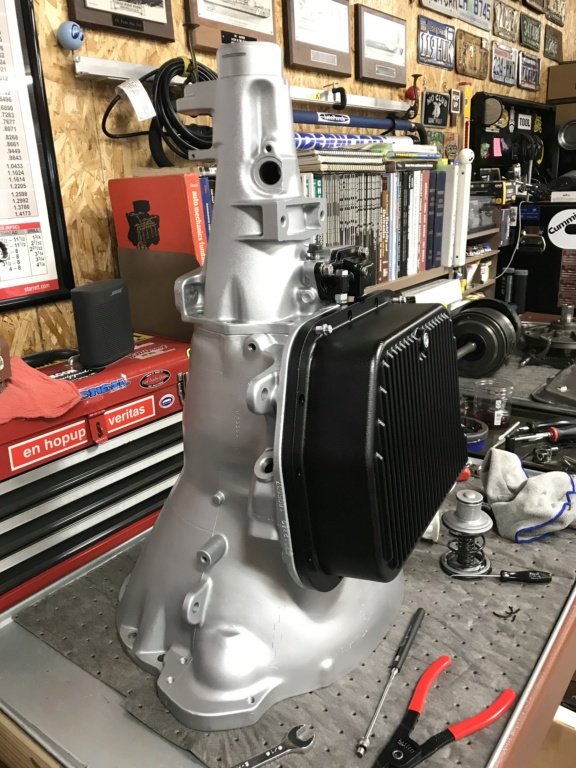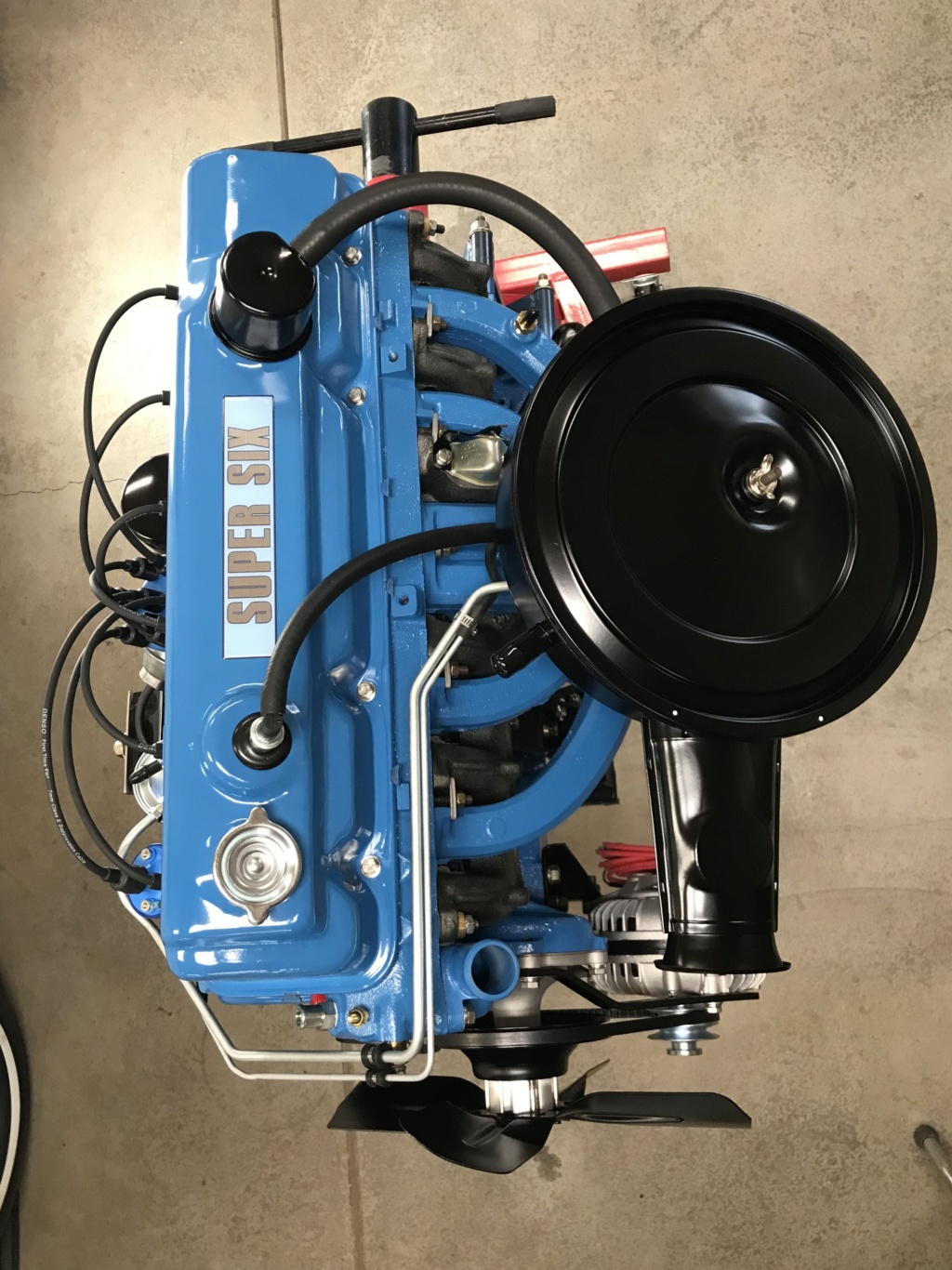
Back in May (2022) I purchased my sweet little 1965 Dodge A100 camper van. It was originally camper-converted shortly after its birth by Bradley Controls Inc. and sold in California as a CA-certified mobile home. It has a Bradley Controls Inc. plaque on it that states "VAN DE CAMPER" with a serial number and model number. The van was equipped from the factory with a 225ci Slant Six mated to an A-727 automatic via A-dapter kit (plate) with an 8¾” rear end out back.
The slant was a huge selling point for me because I love straight sixes. My daily driver is an `07 Dodge Ram 2500 with a 5.9L Cummins, and my last project (frame off) and current fun-mobile is a 1949 Chevy 3100 5-window pickup for which I built a 1957 Chevrolet 261ci straight six. The slant 6 seemed like the eccentric weirdo among the American straight six family and I was intrigued by its 30º gangsta lean.
I found this van on the www.dodgea100.com website. It was located in the desert, out in Nevada, just south of Vegas. Apparently it had lived the majority of its life in Nevada and its lack of rust was a testament to that. So was the 88 pounds of desert dust caked up in every nook and cranny. For me it was love at first sight, so I contacted the owner, struck a deal, hitched-up the trailer and rescued the van whom I’ve since dubbed “Uncle Rico”.
The previous owner was a cool guy, had only owned the van a short while, and was up-front about what little he knew about it. It had been sitting for a year (the entire time he owned it) and it hadn’t run during that time but he had heard it run. It was sporting a dead battery, no gas/old gas, bad ground cable, and wouldn’t roll because the A-727’s park lock cable was severed at the shifter. It was an imperfect scenario but the van was relatively complete and rust-free.
Because I was doing a turn-n-burn from Northern California my mission was to get the van rolling and onto the trailer—I would worry about the rest once I got it home. Plus, having just drove 700 miles with 700 more to go, I wasn’t coming home empty-handed. Nothing was a dealbreaker at this point. After a good ol’ desert heat struggle I had the van loaded and ready for the journey home.
Once Uncle Rico landed back home I got it to run with little effort. The compression was good, and so was the vacuum. The radiator, heater hoses and radiator hoses all looked rough, and the coolant was low, so I pressure tested the cooling system and found it had a slow leak but it wasn’t leaking to the exterior. After peeping through the spark plug holes I found coolant pooled up on top of the #5 piston. Oh well, I’m was going to pull the engine and replace all the gaskets anyway, I thought. I’ll deal with it later.
Over the following 6 months I began working on the van’s smaller issues and collecting parts while I waited for the California DMV to send me my title and registration. It took the DMV over 5 months!!! Hey… good things come to those who wait, and so do ulcers. I was eager to dive in. I was wondering if it was just the head gasket, a cracked cylinder head or the worst case scenario—a cracked block. Since the coolant was leaking from above the piston I figured a cracked head would be my worst case scenario, and I could live with that.
I got around to pulling the 225 and A-727 out for an inspection and overhaul. After a brief cluster-cuss with a 3-wheeled engine stand, followed by the appropriation of a wide-leg, 2,000 lb. engine stand, I stripped the engine down to see what its ailments were. What I discovered was not exactly on my radar…
The head gasket looked fine. All cylinders had nice witness marks around them. The #5 cylinder was nice and steam-cleaned which made it easier to check the combustion chamber for cracks—I heard these can crack between the intake and exhaust valve seats, and for a moment I thought that might have been my problem, but if so, it wasn’t my only problem.
After obsessing over the cylinder head I finally took a peak inside the cylinder bore and the writing was on the wall, literally. The coolant leaking into the #5 cylinder was coming from a crack at the ring line at the top of the piston stroke on the left side of the cylinder. It was quite clear and not new. Besides the stain at the crack near the top, there was a stain on the cylinder wall above the piston at the bottom of the stroke, from water pooling on top of the piston, on the opposite side of the bore which coincided with the 30º slant. #4 and #3 cylinders were also beginning to do crack in the same exact places as #5, their cracks just hadn't reached the water jacket yet. I had my diagnosis: worst case scenario.
The engine had been bored 0.040" over at some point and didn’t have much of a ring ridge. The oil was a bit milky/sludgy in some nooks and crannies so there had definitely been some history of water intrusion. The inside of the the water jacket was ultra rusty, crusty, and full of rust debris and muck—the worst I’ve ever seen. The engine had clearly been neglected and maintained by someone who was not very mechanically inclined: the thermostat was installed backwards, the short heater hose between the cylinder head to the water pump was kinked shut in the middle (seriously), and the spark plugs still had their crush washers on them within the spark plug tubes—I guess I shouldn't be too surprised.
Another red flag was the aftermarket, over-sized flex fan. I say over-sized because the bottom of the radiator tank had been in contact with the fan but not punctured, as well as the radiator support behind the radiator, in front of the fan. The support had been clearanced after the fact because the fan was all beat up from contacting the radiator support and the radiator tank. Additionally, the cylinder head gasket, intake & exhaust gasket, thermostat housing gasket and water pump had all been replaced at some point in the not-too-distant past. Overheating must have definitely been a long-term issue.
The bright side is there was some good parts to be salvaged from the slant, just not the most important part.
The crank is a forged crank. The rocker assembly, cam, lifters and pushrods all look good. The Holley 1920 carburetor was a professionally rebuilt unit aaaaand… that’s about it.
The good news is, back in December 2022, I got a freebie 225 from a cool dude on FABO and it was in my neck of the woods. It was a beat to hell but never rebuilt. I'll post some of those pics on here soon if I can figure out the picture upload. Additionally, I'm just cleaning up the A727 for a rebuild today. So that picture progress will be upcoming as well. I'm hoping to have Uncle Rico back on the road reeeeaal soon.
I’ve already completed a lot of repairs and upgrades since I bought the van: wheels, tires, brakes, DCMC conversion, radiator, exhaust, brake lines, straightened the front bumper, new seats up front, steering wheel refresh, new shift cables, NOS speedo cable, accelerator cable, etc.
I post a lot of pictures of my automotive endeavors on Instagram under the handle: @CastIronPhilosopher for those interested. I'm on YouTube as well as @CastIronPhilosopher. I’m also lurking around on FABO and the Slant6.org website for obvious reasons; same handle.
More to follow.
Thanks for listening,
Ryan







